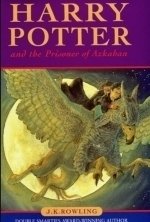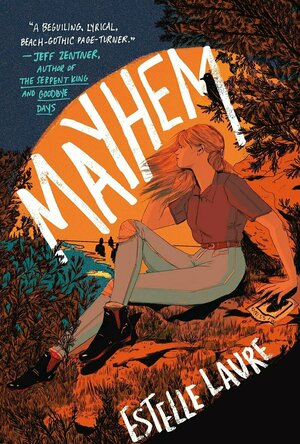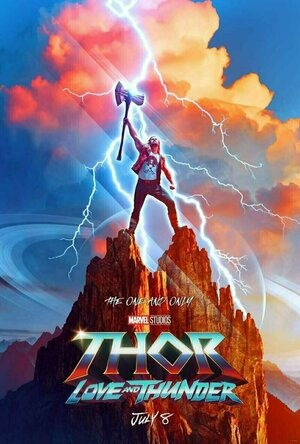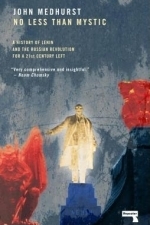
Ultimate Cat Simulator
Games and Entertainment
App
Pounce into a brand new adventure as a graceful Cat! Hunt down food and find your place in a massive...
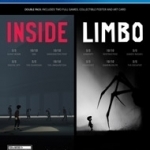
Inside Limbo Double Pack
Video Game
Limbo is a puzzle-platform video game developed by independent studio Playdead. The game was...
Inside Limbo
Ivana A. | Diary of Difference (1171 KP) rated Harry Potter and the Prisoner of Azkaban in Books
Aug 3, 2020
<a href="https://diaryofdifference.com/">Blog</a>; | <a href="https://www.facebook.com/diaryofdifference/">Facebook</a>; | <a href="https://twitter.com/DiaryDifference">Twitter</a>; | <a href="https://www.instagram.com/diaryofdifference/">Instagram</a>; | <a href="https://www.pinterest.co.uk/diaryofdifference/pins/">Pinterest</a>;
#1 <a href="https://www.goodreads.com/review/show/3217515684">Harry Potter and the Philosopher's Stone</a> - ★★★★★
#2 <a href="https://www.goodreads.com/review/show/2371215543">Harry Potter and the Chamber of Secrets</a> - ★★★★★
#3 <a href="https://www.goodreads.com/review/show/3275165909">Harry Potter and the Prisoner of Azkaban</a> - ★★★★
<img src="https://diaryofdifference.com/wp-content/uploads/2020/05/Book-Review-Banner-44.png"/>;
In Harry Potter and the Prisoner of Azkaban, Harry Potter is now in his third year at Hogwarts. The atmosphere is tense. There is an escaped mass murderer on the loose, and the prison guards have been called to guard the school.
In the third book, we can immediately notice a much darker and dangerous atmosphere, compared to the previous book. During the series, the books do get gradually darker and darker, more and more mature, and I think this is the book where we start to notice this transition for the first time.
Harry Potter and his friends have grown up a little, and it clearly shows in their conversations and choices. I was happy to see all the things we learn in this book. The dementors and their deadly kiss, patronuses as well as magical creatures. We learn that Hippogriffs are proud and easily offended.
<b><i>And we also learn that Malfoy is still a little brat.</i></b>
The fact that little entitles Malfoy is so jealous of Harry that daddy puts him to play in the Quidditch team annoyed me so much. I just wanted to slap him!
<b><i>"Pity you can't attach an extra arm to yours, Malfoy," said Harry. "Then it could catch the Snitch for you."</i></b>
I got quite emotional when Harry is troubled by his parent's death and is grieving openly, probably for the first time. I believe him meeting more people that were friends with his parents helped him heal. It is such a good feeling to know Harry does have a family and things are starting to look a bit better for him.
<b><i>"You think the dead we have loved ever truly leave us? You think that we don't recall them more clearly than ever in times of great trouble?"
</i></b>
I didn't quite enjoy the time-travelling part through, I have to be honest. Even though the idea sounds nice, it always troubles me that it is never properly explained and very little attention is being given to it. I wish I read more about it, because then I would have loved it!
I enjoyed this book a lot! It is Harry Potter after all. But it isn't a favorite of mine. I loved how Harry finds out more about his past and gets a couple of more answers, but I also loved that new paths are opening and are waiting to be discovered in the next books.
Ivana A. | Diary of Difference (1171 KP) rated Mayhem in Books
Oct 2, 2020
Estelle Laure, the author of This Raging Light and But Then I Came Back believes in love, magic, and the power of facing hard truths. She has a BA in Theatre Arts and an MFA from Vermont College of Fine Arts in Writing for Children and Young Adults, and she lives in Taos, New Mexico, with her family. Her work is translated widely around the world.
It's 1987 and Mayhem Brayburn has always known something's off about her and her mum, Roxy. Roxy is in constant physical pain, and Mayhem has an irresistible pull to water. She knows they aren't like the other people.
When one day, Mayhem's stepfather goes one step too far, her and Roxy escape to Santa Maria, California, the beach town that holds the answers to all of Mayhem's questions about who her mother is. There, she meets the kids who live with her aunt, and she opens the door to the magic that runs through the female lineage of the Brayburn family. The very magic Mayhem is next in line to inherit and which will change her life for good.
But when she is on a mission to search for a man that has been kidnapping girls from the beach, her life takes another dangerous turn and she needs to pay the price of vigilante justice and to ask herself whether revenge is worth the cost.
My Thoughts:
Mayhem by Estelle Laure is one of a kind. Entwined with mystery, magic with family heritage and revenge, this book is full of emotions.
The beginning of the book, although powerful, is very slow. It took me a little while to get into it, but as soon as I was hooked, it stayed amazing.
Mayhem is an interesting character. She holds a lot of emotions inside of her, all from past experiences that have shaped her character. Sad to say that most of her experiences were not good, and she holds the burden for it all. I can imagine how hard it must be to write a character as complicated as Mayhem, and I think Estelle Laure did and amazing job doing it.
I loved the kids as well - each of them different in their own way, battling their own demons and living through their bad experiences in the past. Some of these characters drastically change over the course of the book, which was unbelievable to me.
The magic aspect of this book was interesting, and for me, original. I have seen many reviews mentioning that this might not be true, and it is a very similar story to The Lost Boys. Since I haven't watched The Lost Boys, I am unable to comment on this part. Personally, I really enjoyed the magic concept with the water, the dependency on it and the family heritage part too.
If you are searching for a YA fantasy thriller, with rich characters and mysterious adventures, I think you will definitely enjoy this book.
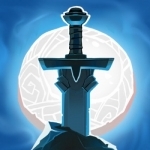
Lionheart: Dark Moon
Games
App
Pick up and play this brand new mobile RPG with stunning graphics and animation! Build your...
RPGApps BattleApps

Deer Hunter: African Safari
Games and Sports
App
NOW WITH GAME CENTER LEADERBOARDS & RETINA DISPLAY support!!! The most realistic hunting franchise...
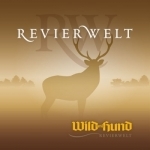
Wild und Hund Revierwelt
Sports and Navigation
App
Enjoy the unity of hunting and nature in combination with the most modern communications technology....
LeftSideCut (3776 KP) rated Thor: Love and Thunder (2022) in Movies
Aug 8, 2022
Any other gripes from me would require stepping into spoiler territory so I'll leave it there. Love & Thunder is frequently dumb, but equally fun, colourful and loud, despite being a bit of a mess. The more Marvel Studios venture into Phase Four, the more sporadic and shaky it feels. I have no doubt that everything will plateau into a solid narrative again, I just hope that moment comes sooner, rather than later.
On a final note, the person I watched this with leaned over to me around the halfway point, and said that Thor just sounds like Boris Johnson when he talks, and now I can't unhear it. If I have to suffer, then you do to.
RavenclawPrincess913 (253 KP) rated Blade of secrets in Books
Jun 15, 2022
Author: Tricia Levenseller
This book and it's cover were both amazing. Thank you to Bookishfirst for sending me a copy of it to review.
The book starts off as Ziva a magical bladesmoth dealing with a Karen customer who hurt himself on his blade.
Quote: "It's not nearly as hurt as your pride else you would be at a healers and not here." Page 5. I agree this is very true and he is acting like a two year old which I found hilarious.
Quote: "How can a man who injures himself with his own weapon be dangerous?" Page 7. This had me laughing.
Than the story went on to Ziva meeting Petrik who specializes in ancient magic and wants her help writing the book he's working on. He's an important character in this book so pay attention. I didn't trust him at first he gave bad vibes but in the end he was on Zivas side.
Quote: "This mace steals the breathe of surrounding enemies! It can kill without even touching an opponent, and yet it sits above the mantel as though it were a-a-decoration!" I agree I would have been mad to putting a good magical weapon to no use. Can just use a normal non-magicked mace for a decoration. Ansel goes to try to kiss her and doesn't understand no means no. Quote: "You think saying a few nice words to me earns you a kiss? That's not how it works." This is 100% true and many people need to learn to understand this. He goes on to have a fit but his parents end up believing her. She also meets Warlord Kymora Avedin during this time. She can't be trusted and I also found it funny Ansel didn't get his way.
When Ziva is making the sword for Kymora she sees Kellyn who is important in this story for the first time. The swords magic is made from her feelings for him and her telling it all her secrets. Which was amazing I loved it that part was intense. When showing Kymora it cuts Kymora and Ziva finds out she can hear the victims secrets when it cuts them.
Two of Kymoras secrets are:
Quote "This weapon will make me unbeatable in combat." Which can be a good thing if your a good guy she's not.
Quote "I will crush Ghadra's pathetic rulers and reunite the regions under one rule once more: my own. The people will be enslaved to my will. The royal family will all bow before me. Right before I remove their heads." This is where I couldn't put it down. For the safety of her country and sister they decided to run. Their journey was fun and interesting. I loved it. Ziva and Kellyn fall for each other and she finally opens up about her anxiety which I can relate to. I loved this story and can't wait to read the next one. It has an amazing but sad cliffhanger ending.
P.S. It's on my favorites shelf now.
Hazel (1853 KP) rated No More Than Mystic in Books
Sep 23, 2017
No Less Than Mystic: A Story of Lenin and the Russian Revolution for a 21st Century Left by John Medhurst is an in-depth historical and political insight to the truth about what really happened in Russia before, during and after the Bolshevik insurrection of October 1917. Beginning with the end of the Tsars rule and ending with Stalinism, Medhurst unearths the fact from the fiction, challenging the information the world has been led to believe.
As mentioned in Medhurst lengthy introduction, previous books on the subject are often biased and inaccurate. Swayed by political beliefs, authors and historians often pass judgement by using the information they have chosen to believe, dismissing anything that goes against their viewpoint. In this book, Medhurst filters through these false histories, preferring to cite from publications written at the time rather than those penned by people who did not witness the events between 1903 and 1921.
Medhurst’s narrative is more political than historical, often going off on tangents. In order to for the reader to obtain some sort of connection with the events described, the author contrasts them with more recent occurrences that readers may have observed or at least understand. These include the British miner’s strike, feminist movements, the Greek economy and a variety of other capitalist struggles.
The Russian revolution is a complex affair that cannot easily be condensed. As a result, No More Than Mystic exceeds 600 pages and covers every event, no matter how big or small, that contributed to the rise of USSR. Russia was a dangerous place to live during the 20th century, particularly when Leninism spiralled into Stalinism. However, Leninism was not all the history books make it out to be.
During GCSE History, one teacher led his class to believe that Lenin was good and Stalin was bad, however, the reality was much more complicated than that. Lenin was not the good guy that many painted him to be. Thousands died as a result of his policies from both execution and starvation. Yet, at the same time, Medhurst tries to point out the reasoning behind the ideas of the communist rulers, refusing to give a personal opinion without laying bare both sides of the argument.
Although this book is accurate and educational, it is not the easiest to sit down and read. Extensive chapters full of mind-numbing information detract from the comprehensive insightfulness of the content. Notwithstanding the fact that the inclusion of contrasting capitalist examples helps the reader to establish some form of familiar ground, the sudden changes in topic, location and time period are often confusing and hard to follow.
No Less Than Mystic is for the intellectual person with a great interest in 20th-century Russian history and communist affairs. Without any prior education on the topic, this book will not mean anything. It attempts to challenge the ingrained beliefs people have about what happened during the Bolshevik insurrection. Those who do not know anything will not benefit from the confronting enlightenment.
In all, No Less Than Mystic is a well-researched academic text that brings a fresh history of Lenin and the Russian Revolution. Those who want an unbiased truth need to read this book and be sceptical about any other on the topic. In order to form opinions, one must know the facts.
